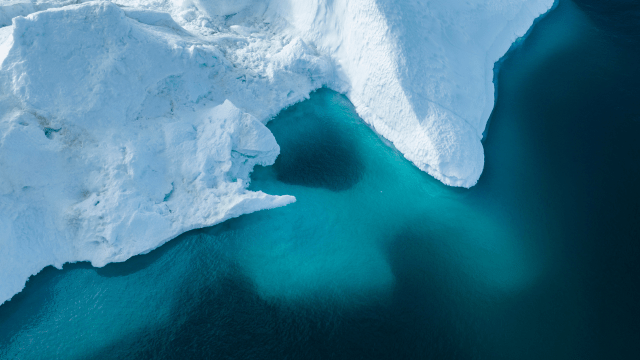What’s white, weighs roughly one trillion metric tons, and is now heading away from the Antarctic Peninsula? If you guessed iceberg A23a, you’re absolutely right, as this colossal chunk of snow and ice is finally leaving the cradle.
Iceberg A23a managed to dislodge itself from the ocean floor in November 2023, but its story actually began 37 years earlier. West Antarctica’s Filchner Ice Sheet birthed the behemoth in 1986, but shortly after its emergence, iceberg A23a became grounded in the Weddell Sea, rendering it immobile. A combination of winds and currents contributed to its long-overdue jailbreak in early November of last year.
For the past several weeks, A23a has seemingly drifted without purpose in the Weddell Sea, but the latest satellite imagery shows the gigantic iceberg heading in a distinctly northern direction away from the Antarctic Peninsula, according to the European Space Agency. It brushed the east coast of Elephant Island and is now en route to the southern Atlantic Ocean. Video of A23a was stitched together using data on sea-ice concentration, showing its path from November 1, 2023, to January 23, 2024.
A23a spans an area of 1,544 square miles (4,000 square kilometres) and has a thickness of approximately 919 feet (280 meters). That’s a big boy—large enough to pack 68 Manhattan islands within its sprawling expanse. Andrew Meijers, the chief scientist aboard the RRS Sir David Attenborough polar research vessel, visited the big ‘berg earlier this month, saying “it stretches as far as the eye can see,” as noted in a British Antarctic Survey press release.
It’s difficult to predict the iceberg’s journey from here. However, based on the trajectories of past icebergs, including giant icebergs A68 and A76a, it’s likely to travel towards the Antarctic Circumpolar Current. Once there, it’s likely to be propelled into the South Atlantic, an area often referred to as “iceberg alley.” Once A23a enters warmer waters, it will slowly start to shed and disintegrate, a natural process that is likely to span several years. This gradual breakdown will be advantageous to the creatures living in its vicinity.
“We know that these giant icebergs can provide nutrients to the waters they pass through, creating thriving ecosystems in otherwise less productive areas,” Laura Taylor, a biogeochemist from the BIOPOLE project, said in the same BAC release. “What we don’t know is what difference particular icebergs, their scale, and their origins can make to that process.” The BIOPOLE mission is currently making use of the RRS Sir David Attenborough, who visited iceberg A23a prior to it breaking free from the Weddell Sea.
As an interesting aside, the Soviet Union’s Druzhnaya 1 Antarctic base was located on the Filchner ice sheet, from where scientists worked each austral summer from 1975 to 1986. When iceberg A23a sprung loose from the ice sheet in 1986, Druzhnaya 1 was still on top of it. In February 1987, the Soviets visited one last time, approaching the iceberg in a ship to collect their equipment from the abandoned base.
